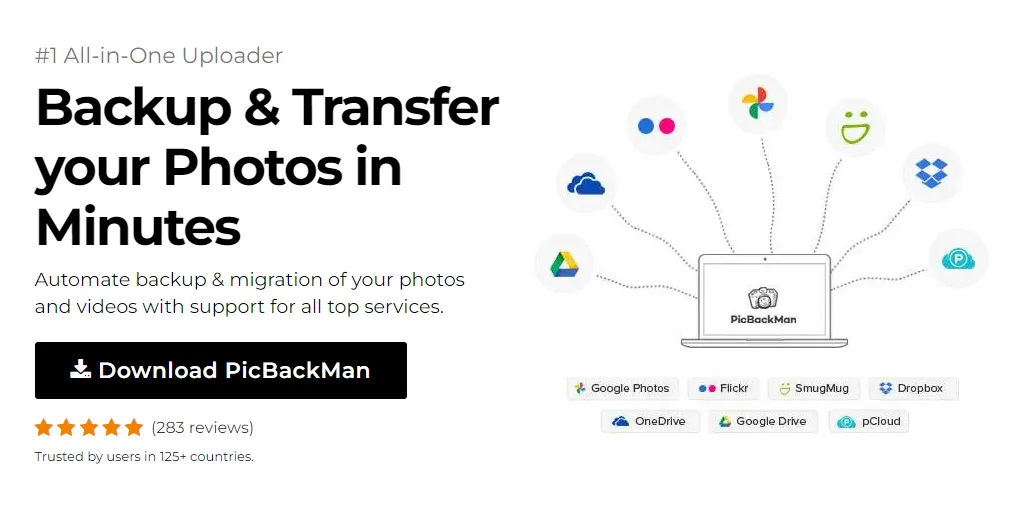
Why is it the #1 bulk uploader?
- Insanely fast!
- Maintains folder structure.
- 100% automated upload.
- Supports RAW files.
- Privacy default.
How can you get started?
Download PicBackMan and start free, then upgrade to annual or lifetime plan as per your needs. Join 100,000+ users who trust PicBackMan for keeping their precious memories safe in multiple online accounts.
“Your pictures are scattered. PicBackMan helps you bring order to your digital memories.”
How to Remove Files from OneDrive But Not PC: A Comprehensive Guide


In today's digital age, file management is a crucial aspect of productivity and organization. Microsoft OneDrive has emerged as a popular cloud storage solution, offering users seamless access to their files from any device with an internet connection. However, managing files on OneDrive can sometimes be tricky, especially when you want to remove files from the cloud but retain them on your local PC. In this comprehensive guide, we'll delve into the intricacies of removing files from OneDrive while ensuring they remain safely stored on your computer. Whether you're a seasoned professional or a novice user, mastering this skill will enhance your efficiency and streamline your digital workflow.
Understanding OneDrive Sync: The Basics
Syncing Files Across Devices
OneDrive's sync feature enables seamless access to your files across multiple devices. When you make changes to a file on one device, those changes are automatically reflected on all synced devices. This functionality ensures consistency and accessibility, regardless of the device you're using.
Selective Syncing
OneDrive offers the flexibility of selective syncing, allowing you to choose which files and folders are synchronized to your PC. This feature comes in handy when you have limited storage space on your device or want to conserve bandwidth.
Why Remove Files from OneDrive But Not PC?
Managing Storage Space
One common reason for removing files from OneDrive while retaining them on your PC is to manage storage space effectively. Cloud storage often comes with storage limitations or subscription-based pricing models, prompting users to offload less frequently accessed files to their local storage.
Offline Access
Keeping files on your PC ensures offline access, which can be crucial in situations where internet connectivity is limited or unreliable. By retaining files locally, you can work seamlessly without interruptions, regardless of your online status.
Data Security and Privacy
Some users prefer to keep sensitive or confidential files stored solely on their local PC for enhanced security and privacy. By removing such files from OneDrive, you reduce the risk of unauthorized access or data breaches associated with cloud storage.
Steps to Remove Files from OneDrive But Not PC
Step 1: Access OneDrive Settings
Navigate to the OneDrive application on your computer and access the settings menu. Depending on your operating system, you may find the settings option in the system tray or within the OneDrive application interface.
Step 2: Selective Sync Configuration
Within the settings menu, locate the option for selective sync or choose folders to sync. This feature allows you to customize which files and folders are synchronized between OneDrive and your PC.
Step 3: Uncheck Desired Files/Folders
Once in the selective sync configuration window, uncheck the files and folders you wish to remove from OneDrive while keeping them on your PC. This action ensures that the selected items are no longer synchronized to the cloud but remain accessible locally.
Step 4: Confirm Changes
After deselecting the desired files and folders, confirm your changes and exit the settings menu. OneDrive will update its sync settings accordingly, removing the selected items from cloud storage while retaining them on your PC.
Step 5: Verify Sync Status
To ensure that the changes have been applied successfully, monitor the sync status within the OneDrive application. You should see the deselected files and folders marked as "not synced" or removed from the synchronization queue.
Step 6: Test Accessibility
Finally, verify that the removed files are still accessible on your PC. Navigate to the respective folders and confirm that the files are present and accessible without relying on cloud storage.
Best Practices for File Management and Organization
Regular Cleanup
Periodically review your files and folders to identify obsolete or redundant items that can be safely removed or archived. This practice prevents clutter and ensures optimal storage utilization.
Folder Structure Optimization
Maintain a well-organized folder structure to facilitate easy navigation and retrieval of files. Utilize descriptive folder names and categorize files logically to streamline your workflow.
Backup Strategy
Implement a robust backup strategy to safeguard your data against unforeseen events such as hardware failures or data corruption. Consider utilizing external hard drives, cloud backup services, or network-attached storage (NAS) solutions for comprehensive data protection.
Troubleshooting Common Issues
Sync Errors
If you encounter sync errors or discrepancies, troubleshoot the issue by checking your internet connection, ensuring sufficient storage space, and verifying file permissions.
Conflicting Copies
In cases where multiple users collaborate on the same files, be mindful of conflicting copies that may arise due to simultaneous edits. Resolve conflicts promptly to avoid data loss or inconsistencies.
Quick Tip to ensure your videos never go missing
Videos are precious memories and all of us never want to ever lose them to hard disk crashes or missing drives. PicBackMan is the easiest and simplest way to keep your videos safely backed up in one or more online accounts. Simply Download PicBackMan (it's free!), register your account, connect to your online store and tell PicBackMan where your videos are - PicBackMan does the rest, automatically. It bulk uploads all videos and keeps looking for new ones and uploads those too. You don't have to ever touch it.
FAQs
How do I access OneDrive settings?
Accessing OneDrive settings is simple. On Windows, right-click the OneDrive icon in the system tray and select "Settings." On Mac, click the OneDrive icon in the menu bar and choose "Preferences."
Can I remove files from OneDrive without deleting them from my PC?
Yes, you can remove files from OneDrive while keeping them on your PC. Simply follow the steps outlined in this guide to deselect the desired files and folders from selective sync settings.
What happens if I delete a file from OneDrive?
If you delete a file from OneDrive, it will be moved to the Recycle Bin or Trash, depending on your operating system. You can restore deleted files from these locations within a certain period before they are permanently deleted.
How do I troubleshoot OneDrive sync errors?
To troubleshoot OneDrive sync errors, ensure that you have a stable internet connection, sufficient storage space, and proper file permissions. Restarting the OneDrive application or rebooting your device may also resolve sync issues.
Can I access OneDrive files offline?
Yes, OneDrive offers offline access to files that have been synchronized to your PC. Simply enable offline access for the desired files or folders within the OneDrive settings menu.
Is OneDrive secure for storing sensitive data?
OneDrive employs robust security measures to protect user data, including encryption, multi-factor authentication, and compliance certifications. However, it's advisable to encrypt sensitive files before uploading them to OneDrive for an added layer of security.
Conclusion: Empower Your Digital Workflow with OneDrive
Mastering the art of removing files from OneDrive while retaining them on your PC is a valuable skill that enhances productivity and data security. By following the step-by-step guide outlined in this article, you can effectively manage your files and optimize storage utilization. Remember to incorporate best practices for file management and organization to streamline your digital workflow and maximize efficiency. With OneDrive as your trusted ally, navigating the complexities of modern file management becomes a seamless and empowering experience.






